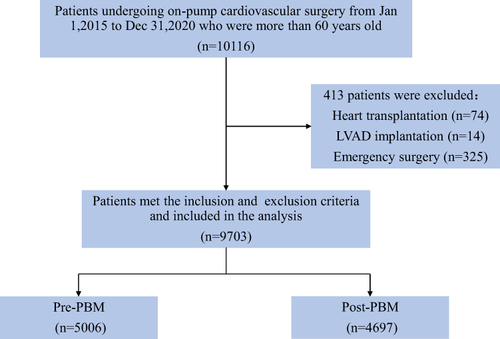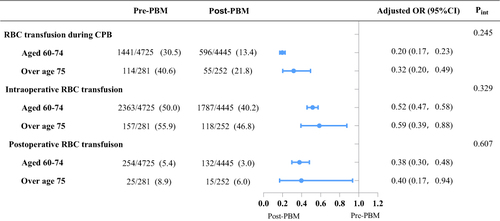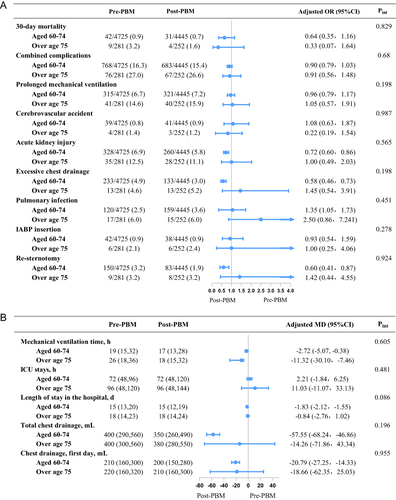Figures & data
Figure 1 Flow chart of the study cohort.

Table 1 Basic Characteristics Between Two Groups After Matching
Table 2 Transfusion Results and Clinical Outcomes After Matching
Figure 2 Effect of PBM on transfusion outcomes stratified by the age. Categorical variables reported as number (%).

Figure 3 Effect of PBM on clinical outcomes stratified by the age. (A) Categorical dependent variables, (B) continuous dependent variables. For all categorical dependent variables and all continuous dependent variables, independent variables involved in these multivariable models were the same, incorporated age (aged 60–74/over age 75), PBM (pre-PBM/post-PBM), age-by-PBM interaction term, sex, EuroSCORE, EF, previous myocardial infarction, hyperlipidemia, chronic lung disease, renal dysfunction, previous cardiac surgery, hematocrit, platelets, creatinine, surgery type, CPB time. Continuous dependent variables are reported as medians (25th percentile, 75th percentile), categorical dependent variables reported as number (%).

